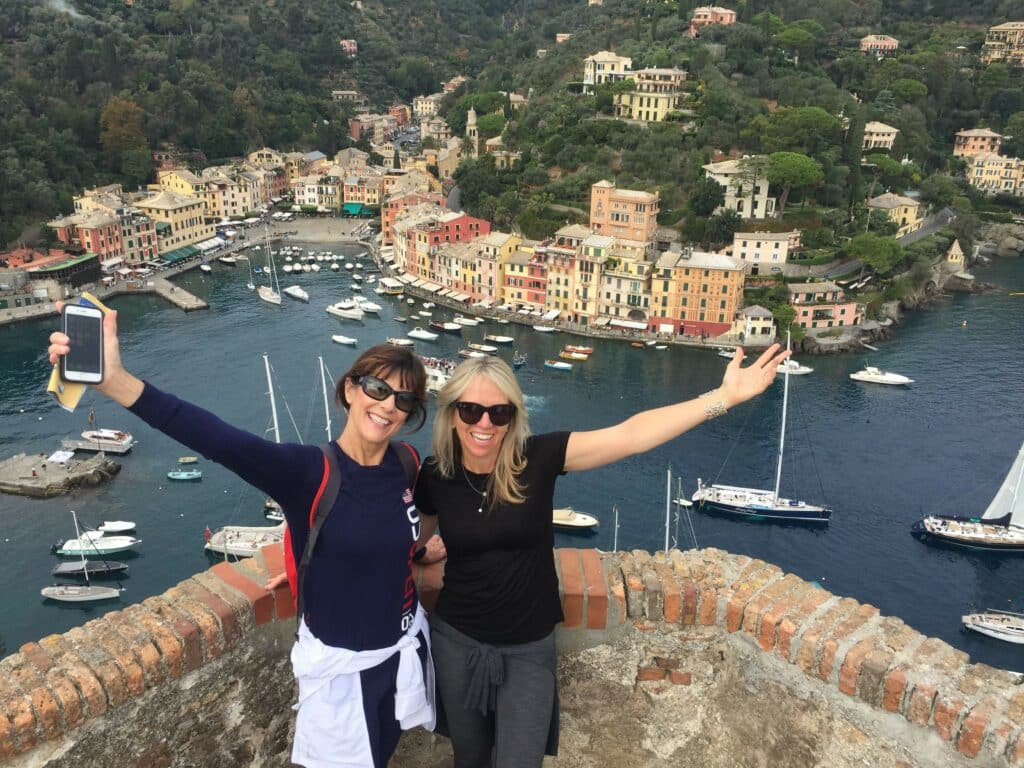Known for being one of Italy’s most beautiful regions, Tuscany has long stolen hearts with its golden-green landscapes, lush vineyards, and honey-hued cities, towns, and villages. Shaped by centuries of creative innovation, Tuscany’s cultural identity has been largely influenced by its starring role in the Italian Renaissance, with some of history’s most famous artists cutting their teeth here. It is a truly captivating corner of the country and a real favorite of the Classic Journeys team, so join us as we share some of the best sights to see and places to go in Tuscany beyond the Leaning Tower of Pisa – from perusing the exquisite collections of Florence’s Uffizi Gallery to wandering the ancient Etruscan streets of picture-perfect Cortona.
#1 Gaze at the Uffizi Gallery

The world-renowned Uffizi Gallery was originally built to house the governmental offices of Florence at the behest of Cosimo the Elder – head of the notorious Medici family, who ruled over the city for many decades during the Renaissance period. Designed by visionary architect and painter Giorgio Vasari, the Uffizi also came to store the Medici dynasty’s vast private collection of art and artifacts – many pieces of which remain in situ today. Following the death of the last-surviving family member, Anna Maria Luisa de’ Medici, the Uffizi first opened to the public in 1769. Nowadays, it holds remarkable masterpieces by the likes of Botticelli, Caravaggio, Michelangelo, da Vinci, and many others.
Visitors are welcome Tuesday through Sunday, with free admission to the National Archaeological Museum and the Museum of the Opificio delle Pietre Dure included in the cost of your ticket. If you have time, we’d also recommend walking the kilometer-long Vasari Corridor; a once-secret elevated passageway connecting the Uffizi to Palazzo Pitti (former home to the Medici) via the iconic Ponte Vecchio, or Old Bridge. Its walls are lined with artworks and imbued with stories, while small windows allow glimpses into city life unfolding below.
#2 Experience Piazza del Duomo

Staying in Florence, we believe no trip is complete without pausing at Piazza del Duomo – the city’s most visited square. Lying within its UNESCO-listed historic center, this is where you’ll find those instantly recognizable marble structures and bulbous burnt-orange roofs that can be seen for miles around. Travelers flock to Piazza del Duomo mainly to marvel at its significant concentration of important holy monuments, which include the Battistero di San Giovanni, the Basilica of Santa Maria del Fiore, and the Campanile di Giotto.
Florence’s cathedral, the Basilica of Santa Maria del Fiore, is just as striking in person as it is in photographs – topped by an imposing terracotta dome with a Gothic façade decorated in pastel, gelato-like shades. Its interior is equally impressive, particularly the mosaic floors and intricately detailed frescoes. Giotto’s Bell Tower, or Campanile, sits alongside the Basilica and shares the same architectural style, embellished with statues and sculptures of religious figures. Located directly opposite, the bronze-doored Battistero (Baptistery) di San Giovanni is one of the oldest buildings in the city, having stood since at least the Middle Ages – but believed by many Florentines of the time to have been used as a pagan temple during the Roman era.
#3 Taste the Truffles in San Miniato

Nestled in the agricultural hinterland of Tuscany, the village of San Miniato has become synonymous with white truffle since the world’s largest was unearthed nearby in 1954. Found halfway between Florence and Pisa, it is the go-to destination for lovers of this decadent ingredient thanks to the National White Truffle Exhibition, which is typically held over the last three weekends in November to honor the annual harvest. In celebration of this natural treasure, which thrives in and around the San Miniato countryside, the event features market stalls, tastings, and truffle-hunting experiences, showcasing recipes and products that incorporate the distinctive quality of white truffle in both traditional and experimental ways. Look out for tagliolino al tartufo bianco delle Colline Sanminiatesi on the menu – a heritage dish that must adhere to strict rules in its preparation. For instance, it must be free of any artificial flavorings, and the fresh pasta can only be made with soft wheat flour or durum wheat semolina.
#4 Enjoy the Finer Things in Cortona

The medieval hilltop settlement of Cortona is a fortified town with origins dating back to the fifth century BC. This long history can really be felt through its rustic architecture and labyrinthine side streets, which are peppered with cozy trattorias and osterias serving authentic Tuscan cuisine, as well as shops selling the wares of local artisans – from leather goods and ceramics to jewelry and paintings. We explore these streets on our culinary tour of Tuscany and stay in a charming 8th-century villa, channeling Frances Mayes in her memoir, Under the Tuscan Sun.
The town’s Roman and Etruscan heritage informs much of the cultural landscape here, with a museum dedicated to these ancient civilizations and the 1456-built Cathedral of Santa Maria Assunta being among the notable attractions. There is also the Diocesan Museum, whose collection comprises items from churches and convents across Cortona.
#5 See the Iconic Fishing Village of Portofino

Just across the regional border, on Italy’s Ligurian coast, the colorful cove of Portofino is a must-take detour while exploring Tuscany. Classic Journeys visits this stunning destination as part of our cultural walking tour of Tuscany and the Cinque Terre, staying at the luxurious Grand Hotel Miramare and stopping off at the nearby Benedictine monastery of San Fruttuoso – accessible only on foot or by boat. Elsewhere in Portofino, travelers can wander around a natural harbor filled with white boats and hike to the Church of San Giorgio, where delightful views await. Here, cliffs and hills covered with olive and grape groves meet the unfathomably blue sea, whose fruits have sustained the village’s small fishing industry over the centuries. While embodying the idyllic beauty of the Italian Riviera, Portofino also has some grittier stories to tell; tales of pirates and sieges. And, for an authentic taste of Portofino, look out for focaccia, minestrone soup, and dishes with Genovese pesto on the menus of local restaurants.
Check out all of our trips to Italy and experience La Dolce Vita for yourself.





